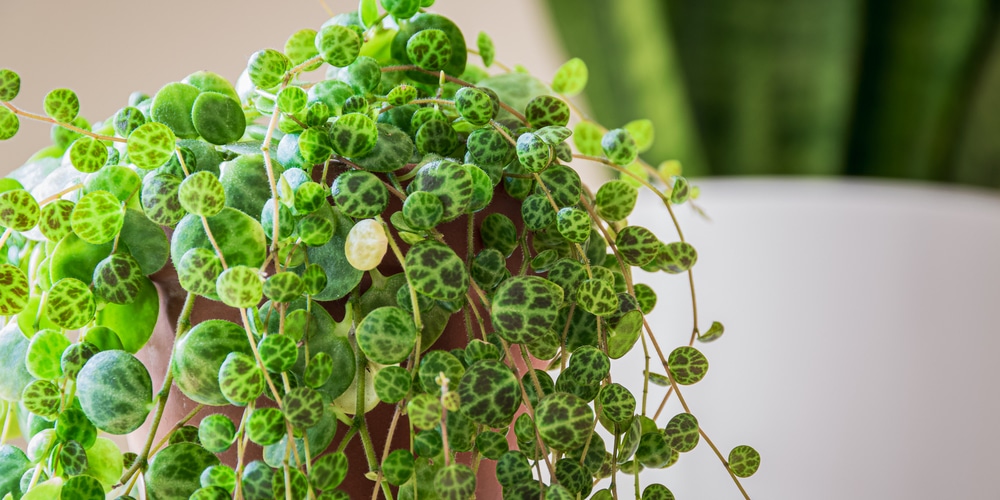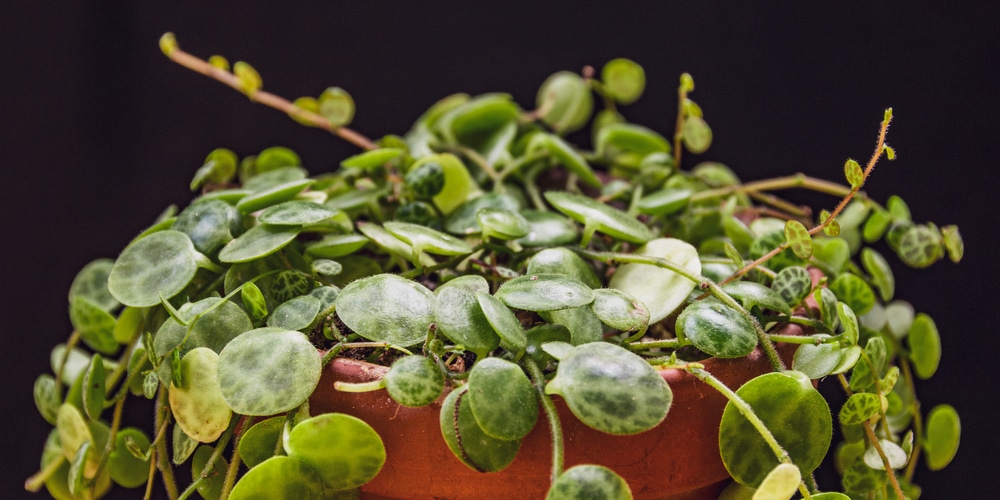String of Turtles (Peperomia Prostrata) is a beautiful little succulent that’s native to Brazil. It can be grown indoors as a houseplant or outside in USDA zones 10 to 12. This plant is slow-growing and stays small once mature. It can be propagated using a single vine from the plant and is relatively easy to care for.
String of turtles have trailing vines and look great in a hanging basket. They can also be grown hanging over the edge of a windowsill or a shelf. Let’s look at how to grow and care for a string of turtle’s plant.
What is a String of Turtles Plant?
String of turtle plants is native to Brazil and grows in climates similar to the average home. This makes these plants an excellent choice, and as its small, is great for those who live in small apartments. The string of turtle’s scientific name is Peperomia Prostrata.
String of turtles are slow-growing; it can take up to five years for the plant to reach maturity. When fully grown, the plants will be approximately 12 inches in size. These plants have attractive round leaves that hang down on vines; they have a beautiful mottled appearance and look like tiny turtles. These plants are often grown in terrariums or fairy gardens.
The string of turtles foilage is multi-colored and hangs on a trailing vine. These plants are varying shades of green, which will get darker with age. String of turtles plants flower in the wild with beautiful cream-colored flowers. Unfortunately, they are unlikely to flower if kept as a houseplant. This plant needs ideal conditions to bloom.
Caring for a String of Turtles Plant
While string of turtle plants are easy to care for, they do need some special care that differs slightly from the average succulent. String of turtles is a tropical plant that thrives in indirect sunlight. The following tips will help you grow a healthy, well-kept plant:
Sunlight needs
String of turtles plants should be placed in an area with bright indirect sunlight. They need enough light to thrive but shouldn’t be left in direct sun, or their leaves will burn. Keeping your plant in full sun will cause its leaves to become discolored and will eventually kill the plant.
Soil Type
While most succulents are grown in light, dry soil string of turtles has slightly different soil needs. Most succulents and cacti soil premixes aren’t suitable for a string of turtles. These plants require moist, loamy soil that has a pH that’s neutral to acidic. You can create the perfect soil by mixing peat into a standard houseplant soil.
Alternatively, use peat-based soil such as a commercial seed starting soil. String of turtles likes peat as it’s slightly acidic, and these plants thrive in a lower pH range. However, it would help if you were careful not to let the pH get too low. You may like to test your plant’s soil with a home test kit to check that it’s in the correct range and help your plant stay healthy.
Watering Requirements
String of turtles love moist soil but can be affected by overwatering. They are relatively drought resistant as the species is native to the Brazilian rainforest, where there is an annual dry season. There are also seasons where heavy showers are common. Peaty soil is best as it’s able to retain moisture.
During the growing season, from the spring to summer, you can keep your plant’s soil moist using the ‘soak and dry’ watering methods. This means you can give your plant lots of water and then leave it to completely dry out before the next watering. You can reduce watering slightly in the winter months, but don’t neglect your plant as it still requires water. During winter, your plant will be dormant.
It’s important not to overwater your plant. Once the soil is moist, leave it to dry out rather than watering again. Your plant doesn’t want to live in very soggy soil and may suffer from root rot if it’s constantly overwatered.
You can avoid overwatering by adding a layer of stones or gravel to the bottom of your plant’s pot. This will help with drainage. It’s also a good idea to plant your string of turtles in a pot with holes in the bottom so that that excess water can run away.
Temperature and Humidity
String of turtles like cooler, humid temperatures rather than hot climates that most succulents are accustomed to. These plants thrive at an average room temperature of about 68o to 75o Fahrenheit.
If you live in a dry climate, it may be beneficial to mist your Peperomia Prostrata to help increase humidity. You can also set a tray of pebbles and water underneath your plant. As the water evaporates, it will increase the humidity and be absorbed by the plant’s leaves. Ensure that none of the vines are sitting in water if you use this technique. Vines and leaves that are often wet will eventually start to rot.
Fertilizer Needs
During the growing season, from spring throughout the summer, you can feed your string of turtles plants by using a diluted houseplant fertilizer. This will add nutrients to the soil and help your plant thrive and look healthy. You may find that your plant’s leaves look brighter and are more likely to maintain color and patterns throughout the growing season. You can give fertilizer to your plant once a month in the growing season.
Pruning Requirements
You’ll need to prune your string of turtles plant to keep it looking nice. Plants that aren’t pruned may start to look unkempt or even develop a ragged, leggy appearance. Cut off any dead or damaged stems with clean scissors or a sharp knife. This will help encourage new growth. You can always use your cuttings to propagate a string of turtles,
Conclusion
Peperomia Prostrata are unique and attractive succulents that make a great addition to any home. They look particularly nice growing over the edge of a shelf, windowsill, or in a hanging basket. These plants have long trailing vines with lovely round leaves in various hues. While they are easy to care for, they do have some specific care requirements which vary slightly from the average succulent. The above information will help you grow and care for a plant that’s thriving.

